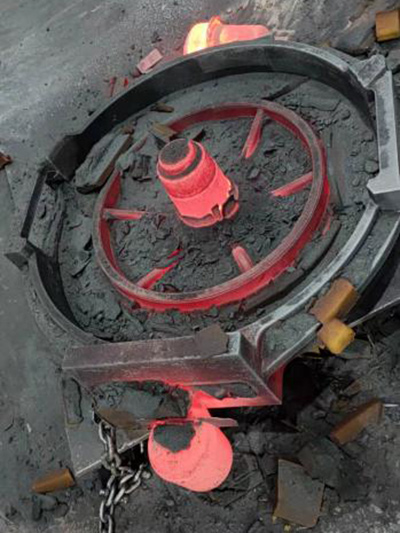Investment Casting Sand An Overview
Investment casting, also known as lost-wax casting, is a precision manufacturing process that yields intricate metal parts with superior surface finish and dimensional accuracy. Central to this process is investment casting sand, a crucial material that significantly influences the quality of the final product. In this article, we will delve into the importance of investment casting sand, its types, properties, and the role it plays in the overall investment casting process.
Investment casting sand is primarily used to create a mold around a wax pattern. The process begins with the wax pattern being coated in a slurry made from fine sand and binding agents. Once the coating dries, the mold is heated to melt and remove the wax, leaving behind a hollow ceramic shell that defines the shape of the final cast part. The choice of sand used in this process affects the mold's strength, thermal stability, and ability to capture fine details.
investment casting sand

There are several types of sands used in investment casting, but the most common includes silica sand, zircon sand, and chromite sand. Silica sand is widely utilized due to its availability and cost-effectiveness. However, its high thermal expansion can sometimes lead to imperfections in the final piece. Zircon sand, on the other hand, offers superior thermal properties and lower thermal expansion, making it a better choice for intricate designs where precision is paramount. Chromite sand is utilized for its high resistance to heat and its ability to present smooth surface finishes, though it is typically more expensive than other options.
The properties of investment casting sand are critical in determining the success of the molding process. Key factors include grain size, shape, and uniformity. Fine-grained sands tend to produce smoother surface finishes, while coarser sands may allow for greater strength and durability. Moreover, the sand's ability to withstand thermal shock and its bonding characteristics also play a significant role in ensuring that the mold retains its integrity during the casting process.
In conclusion, investment casting sand is a fundamental component in the investment casting process, impacting both the quality and precision of the final product. With a range of sand types available, manufacturers must carefully choose the right material to match the specific requirements of their casting projects. Understanding the properties and behaviors of these sands allows for optimized production processes, resulting in high-quality castings that meet rigorous industry standards. As technology continues to advance, the role of investment casting sand will remain pivotal in a variety of applications, from aerospace to medical devices, ensuring innovation and efficiency in manufacturing.
Post time:Ott . 30, 2024 12:04
Next:super sand magic
